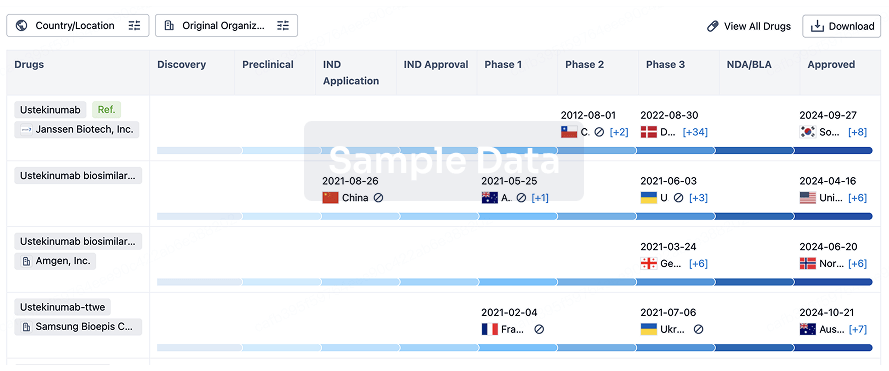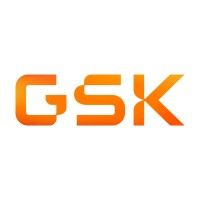May 27, 2015
By
Riley McDermid
, BioSpace.com Breaking News Sr. Editor
Freshly IPO’d
bluebird bio
will pay
Five Prime Therapeutics, Inc.
$130 million for a variety of chimeric antigen receptor (CAR) T cell therapies, as the scrappy gene therapy firm attempts to muscle its way into the crowded, and lucrative, immuno-oncology space.
Under the terms of the deal,
Bluebird
will pay $1.5 million up front for the rights to a host of
Five Prime
antibodies that block an undisclosed, cancer-related target.
Bluebird
said in a statement Wednesday that it hopes to use its own proprietary gene therapy technology to mold those into CAR-T treatments.
Five Prime
is also eligible for up to $130 million if it hits specific development, regulatory and commercial milestones, as well as a slice of the royalties if Bluebird’s efforts ever become commercialized.
“CAR T cell therapies have emerged as a very promising approach for treating a number of cancers,” said
Lewis
“
Rusty
”
T. Williams
, chief executive officer and president of
Five Prime
.
“
Bluebird Bio
brings a wealth of knowledge in the area of gene therapy, a key component of building CAR T therapeutics. We are also impressed by
Bluebird Bio
‘s development and manufacturing infrastructure,” he said.
“We feel that
Bluebird Bio
is well positioned to succeed with converting
Five Prime
‘s human antibodies to CAR T cell products that can benefit patients, and we are pleased that our proprietary platform continues to demonstrate its versatility in the field of immuno-oncology.”
Analysts applauded the deal Wednesday, saying it was both a validation of
Five Prime
’s technology and an indication that
Bluebird
is thinking about long term strategy heading into its first year as a public company.
Tony Butler
, a biotech analyst with
Guggenheim Securities
, wrote in a note to investors that the deal echoes other Big Pharma companies’ interest in
Five Prime
’s science.
“We believe the partnership with
BLUE
is another important step forward for FPRX. In late 2014, FPRX and
Bristol-Myers Squibb Company
(BMY, NEUTRAL, $67.50) established a partnership to evaluate FPRX’s FPA008 (CSF1R inhibitor) in reducing immunosuppressive macrophages in the tumor,” said Butler. “The company also has a partnership with
GlaxoSmithKline
(GSK, NC, $43.84) to develop FP-1039 to inhibit FGFR positive cancers. Yesterday’s agreement suggests that FPRX’s target is intriguing enough for
BLUE
to invest in, and we see this as a validation of FPRX’s discovery platform and another positive sign supporting the company’s overall strategy.”
It’s been a busy spring for
Bluebird
. Last week shares of the closely-watched gene therapy company shot up more than 15 percent in morning trading Thursday, after the company released an abstract of data that shows its sickle cell anemia drug, LentiGlobin, has kept two patients transfusion free for 14 and 11 months, respectively.
Bluebird
released the data from a February test as part of an abstract it will present in June at the
European Hematology Association
in Vienna, Austria.
On Feb. 2, 2015,
Bluebird
announced that the
U.S. Food and Drug Administration (FDA)
had granted LentiGlobin BB305 Breakthrough Therapy designation, which is used to expedite the development and review of a potential drug candidate that is expected to be used to treat a serious or life-threatening diseases.
In the case of LentiGlobin BB305, initial data last fall from an ongoing Phase I/II Northstar (HGB-204) and HGB-205 studies looked at eight patients with beta-thalassemia that were treated with LentiGlobin. In the first four patients, treatment resulted in sufficient hemoglobin production to decrease the need for transfusion support among the patients.
That news sent shares of the company up 70 percent the day it was announced, as the market looked eagerly for signs that
Bluebird
’s LentiGlobin BB305 could be a panacea for blood diseases.
Last week’s data had a similar effect on the company’s share price and had executives eager to trumpet the results and explain what they mean, which is that one of the patients treated has no had to seek hospitalization for his sickle cell and has even started producing anti-sickling properties.
“The early data included in our abstract provide further validation for our approach and important insights into the safety and mechanism of action of LentiGlobin in both beta-thalassemia and sickle cell disease,” said
David Davidson
, chief medical officer for
Bluebird
.
“As noted in the abstract, we are pleased to report that the two patients with beta-thalassemia major, on whom we first reported last year at
EHA
, remained transfusion independent at 14 and 11 months post-transplant,” he said. “In addition, it is very encouraging that the patient with sickle cell disease is increasing production of HbAT87Q, which has anti-sickling properties, and has not had a post-treatment hospitalization for a sickle cell disease-related event. At
EHA
we will present further follow up data on all three subjects.”
That news had both analysts and
Wall Street
investors cheering, because it shows LentiGlobin is on track.
“Our recent deep dive on LentiGlobin combined with this update keep us confident that
BLUE
is on the cusp of a dramatic breakthrough for many sickle cell disease patients and we await further updates,” wrote
Joshua Schimmer
, a biotech analyst for
Piper Jaffray
, in a note to investors.
Bluebird
’s LentiGlobin BB305 extracts blood stem cells and then infuses them with a working version of the malfunctioning gene that had caused the disease. People with the disease must undergo monthly blood transfusions in order to survive—but if
Bluebird
’s therapy continues to be successful, they may now be freed from that burden.
The number of people affected is not huge, but is certainly significant: Around 40,000 babies world-wide and between 1,000 and 3,000 in the U.S. are born with the condition each year.
The new therapy is so effective,
Wall Street
is champing at the bit to see it be rushed into later-stage trials to bring it to market more quickly. Some analysts have long said
Bluebird
has a “robust” proof of concept for the therapy so far, said Schimmer.
“The abstract notes the peripheral blood T87Q vector copy number is an impressive 2.4. This should be a good marker for what’s happening in the bone marrow, meaning that a majority of cells have a copy of the corrected gene,” he wrote in his note. “This also means that
BLUE
‘s busulfan myeloablation regimen was effective in establishing chimerism with the LentiGlobin cells. And this also means that as the patient continues to be weaned from transfusions, the corrected cells should be easily able to ramp up production and eliminate sickling and its consequences.”
The results of this data, though hardly extensive, are apparently promising enough for the
FDA
and the
EMA
to consider conditional approval for use of the drug.
But Butler noted that its important the market not think of
Bluebird
as only a one trick pony, as today’s deal with
Five Prime
illustrates.
“Why go
BLUE
? Although
BLUE
has gained much attention for its beta-thalassemia program, which received Breakthrough Therapy designation in February 2015, little is known about the company’s preclinical CAR-T program,” wrote Butler. “However, the company has been collaborating to evaluate CAR-T cell therapies with
Celgene Corporation
(CELG, CS, $114.46) and
Baylor College of Medicine
since 2013. BLUE’s CAR-T program would introduce the FPRX-based chimeric TCR via lentivirus, which
BLUE
uses in all of its advancing clinical programs. Although we view
BLUE
’s program as early-stage, the company has made ground-breaking strides in gene therapy technology, and we believe the company has sufficient experience and resources to incorporate FPRX’s antibodies into a CAR-T product.”
Bluebird
generated a lot of buzz earlier this year when its chief executive told an audience at a closely watched industry event held by
J.P. Morgan
that the company expects data on its potentially-disease ending sickle cell treatment by the end of 2015.
Nick Leschly
, CEO of
Bluebird
, also said that LentiGlobin BB305 keeps track of production a key marker in keeping down the cost of clinical trials and measuring data.
Leschly made the comments at the
J.P. Morgan
Healthcare Conference in January in San Francisco and is the oldest and largest conference of its type. It includes 300 of the largest biotech, healthcare and biopharma companies presenting their top-line data and estimates to 4,000 eager bankers, analysts, institutional investors, hedge funds and journalists. He presented the following milestones for
Bluebird
in the next two years:
Will PfizerKline Become the Next Pharma Player?
The speculation surrounding a possible bid from
Pfizer Inc.
for struggling
GlaxoSmithKline
is heating up, after one closely-watched biotech analyst said in a
note last week
that
Pfizer
buying the company would “unlock access to its balance sheet and improve its tax situation.”
Gregg Gilbert
, a biotech analyst at
Deutsche Bank
, wrote in a note to investors “Introducing
PfizerKline
” that he thinks a deal would be “materially accretive” for both companies. Gilbert estimated that a bid priced at $29.86 a share, via half stock and half cash, which would push up
Pfizer
’s earnings per share by 10 percent to 16 percent beginning in 2016.
“We believe that the company has a sense of urgency to create value by leveraging the power of its balance sheet to do needle-moving deals,” Gilbert wrote. “Since media reports in the past have pointed to the potential for a
Pfizer/GSK
combination, we are revisiting that theme.”
We want to know, dear readers, if you agree? Should Glaxo continue going it alone, or might Pfizer buy it and create one of the world’s largest pharma players in history?
var _polldaddy = [] || _polldaddy; _polldaddy.push( { type: "iframe", auto: "1", domain: "biospace.polldaddy.com/s/", id: "will-pfizerkline-become-next-pharma-player", placeholder: "pd_1432740672" } ); (function(d,c,j){if(!document.getElementById(j)){var pd=d.createElement(c),s;pd.id=j;pd.src=(' '==document.location.protocol)?' ':' ';s=document.getElementsByTagName(c)[0];s.parentNode.insertBefore(pd,s);}}(document,'script','pd-embed'));











